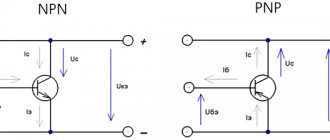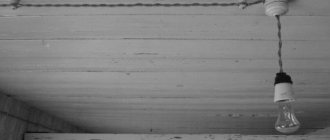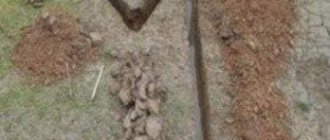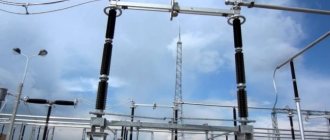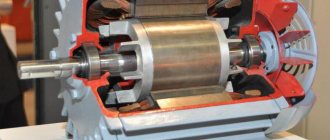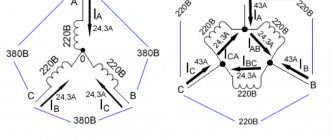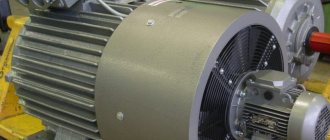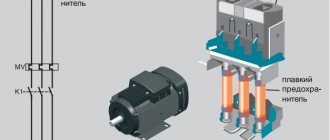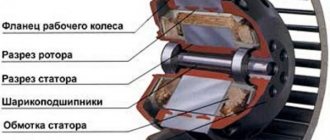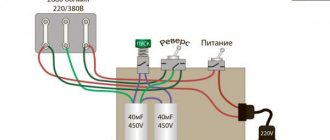Almost every person who has at least a little something to do with technology knows what an asynchronous electric motor is. But not many people know exactly how it works and what it consists of, even those who work and use such engines. The article will discuss in detail the main components and operating principle. Let's answer the questions:
- What is an ED stator and its purpose?
- What is an armature in an engine?
- What are field windings?
The three-phase asynchronous electric motor was invented by the Russian scientist M. O. Dolivo-Dobrovolsky in 1889. Its main purpose is to convert electrical energy into mechanical energy. Due to its efficient operation and low cost, it is one of the most produced engines. They also owe their popularity to the simplicity of their operation.
The asynchronous electric motor is used in all industries. They are widely used for household appliances. As a rule, motors that operate on alternating current are used. You can even find them in children's toys.
The operating principle is based on two laws: magnetic induction and Ampere's law. The first law describes the appearance of electromotive forces under the influence of changes in the magnetic field created by the stator. The second law describes the operation of the rotor, which consists of electrical charges supplied to the conductor, which are located inside the magnetic field and explains the distribution of moving forces.
Principles of stator rewinding
The electromagnetic field of the stator is created using three-phase rewinding. A certain number of coils connected to each other are attached to the grooves of the electric motor.
Options for rewinding the stationary part of electric motors depend on the type of insulation, the choice of which is determined by the following parameters:
- maximum voltage indicator;
- permissible rewind temperature value;
- dimensions and type of groove;
- type of winding.
Depending on the method of placing the coils in the stator slots, the motor is rewinded in one or two layers. Copper cable is used as the winding material.
What are field windings?
The rotor is a permanent magnet, and the stator is a generator of an alternating magnetic field. The field that the stator creates is motionless relative to it. By turning on the electric motor, no work will occur in the original version, and the stator will be under the influence of the field or without it. In order to make the armature rotate, an excitation winding is needed. The main function of the field winding is to change the polarity of the rotor, thus giving it rotational motion. When the required speed is reached, the excitation winding is switched off.
Carrying out repairs
Any electrical equipment, over time, is characterized by failures in its operation. The causes of breakdowns can range from simple pollution to exposure to external factors.
In case of malfunction, start repairing the electric motor by cleaning or purging the stator elements. Then, after removing dirt and dust, proceed to removing the product body to replace the winding. On a lathe or using a chisel, the front part of the stator rewind is cut off.
To soften the insulating material, the stator should be accelerated to a temperature of about 200 degrees, after which the winding is removed, the coil is removed and the grooves are cleaned. After disassembling the electric motor, a new stator winding is installed using ready-made templates.
After installing the coil, it is varnished, followed by drying at a temperature of 150 degrees Celsius for at least two hours.
Checking the electric motor for resistance between the housing and the winding is carried out after all parts of the stator have dried. Adjustment of the equipment to the required parameters is possible by selecting a cable for rewinding.
Recommendations
- Klempner, Jeff; Kersenbaum, Isidore (2004). Operation and maintenance of large turbogenerators
. John Wiley and Sons. ISBN 978-0-471-61447-0. - Energy-saving IE3 motors Archived 2012-10-30 on the Wayback Machine, Engineer Live
- Super-efficient engines have copper rotors Archived 2013-05-09 at the Wayback Machine; Drives and controls; April 2006
- "Fans of the destratification of Irius." Archived from the original on 04/20/2017. Retrieved 2017-04-19.
Stator thermal insulation
During operation, cases of overheating of parts and components due to engine malfunctions cannot be excluded. An increase in the temperature of the stator winding is associated with a change in the value of the current consumed. This failure occurs due to the opening of the electrical circuit, due to the loss of the electrical signal of one of the phase wires.
Another reason for temperature changes may be mechanical wear of bearings. In this case, the insulation of the motor winding suffers, rendering it inoperative.
These days, overheat protection is used on almost all electrical appliances. It works in the following cases:
- in case of failures during starting or deceleration of the stator;
- under heavy overloads;
- during sudden power surges;
- when phase wires fail;
- when the engine is running with a jammed rotor;
- in case of drive device failures.
Motor rotor
Electric motors use so-called “squirrel wheels” (squirrel-cage rotors), the design of which resembles squirrel drums.
When the stator rotates, the magnetic field moves perpendicular to the windings of the rotor conductors; current appears. This current circulates through the windings of the conductors and creates magnetic fields around each rotor conductor. Since the magnetic field in the stator is constantly changing, the field in the rotor also changes. This interaction causes the rotor to move. Like the stator, the rotor is made of electrical steel plates. But, unlike the stator, with windings made of copper wire, the rotor windings are made of cast aluminum or silumin, which act as conductors.
Differences between electric motors in industrial production
Large enterprises with large production areas require equipment operating at high capacities. The technical characteristics of electric motors allow such machines to operate at powers ranging from 1 to 2.5 kW.
- Details about scissor lift
- How to choose a monument?
Why do you need online personnel testing?
In woodworking production, machines of three-phase type and asynchronous operating principle are used. At the same time, they operate without problems at a household voltage of 220 Volts.
Distinctive features of such engines are:
- high power performance with small dimensions;
- increased rotation speed;
- protection from moisture;
- durability and performance.
Motor slip
Now we already know that AC electric motors are called asynchronous because the moving field of the rotor lags behind the field of the stator.
In AC motors, torque results from the interaction between the rotor and the rotating magnetic field of the stator. The magnetic field of the rotor windings will tend to approach the magnetic field of the stator, as described earlier. During operation, the rotor speed is always lower than the speed of the stator magnetic field. Thus, the rotor magnetic field can cross the stator magnetic field and create torque. This difference in the rotational speed of the rotor and stator fields is called slip and is measured in %. Sliding is necessary to create torque. The greater the load, and therefore the torque, the greater the slip.
Checking the generator stator using a multimeter, how to check with a test light
The generator stator is checked for either an open circuit or a short circuit. To check the resistance, use a multimeter; in extreme cases, you can use a test light.
The multimeter should be switched to ohmmeter mode, after which its probes are connected to the terminals of the windings. If there is no break, the tester will show a resistance of 10 ohms. If there is a break, the resistance will show a value tending to infinity. With this result, three conclusions are checked. To obtain more accurate verification results, it is better to check the received data with your passport data. You should know that inexpensive Chinese multimeters are not able to accurately show the resistance being measured (accuracy is sometimes required to tenths of an ohm), so you should get a good branded device.
If it is not possible to get any multimeter, but you need to check, you can use a test light (control). It won't show the exact resistance, but it will help you find the gap. Using an insulated wire, a negative charge is supplied from the battery to the winding contact. A positive charge should be applied through the light bulb to another contact. If the light is on, then the gap has not been found and the device is functioning properly. This procedure is repeated for all outputs.
Diagnostics for short circuits is also carried out using a multimeter or a test light. The positive probe must be connected to any winding contact, and the negative probe to the stator. This should be repeated with each output. The turn-to-turn short circuit is determined using a test lamp in a similar way. Call all findings.

